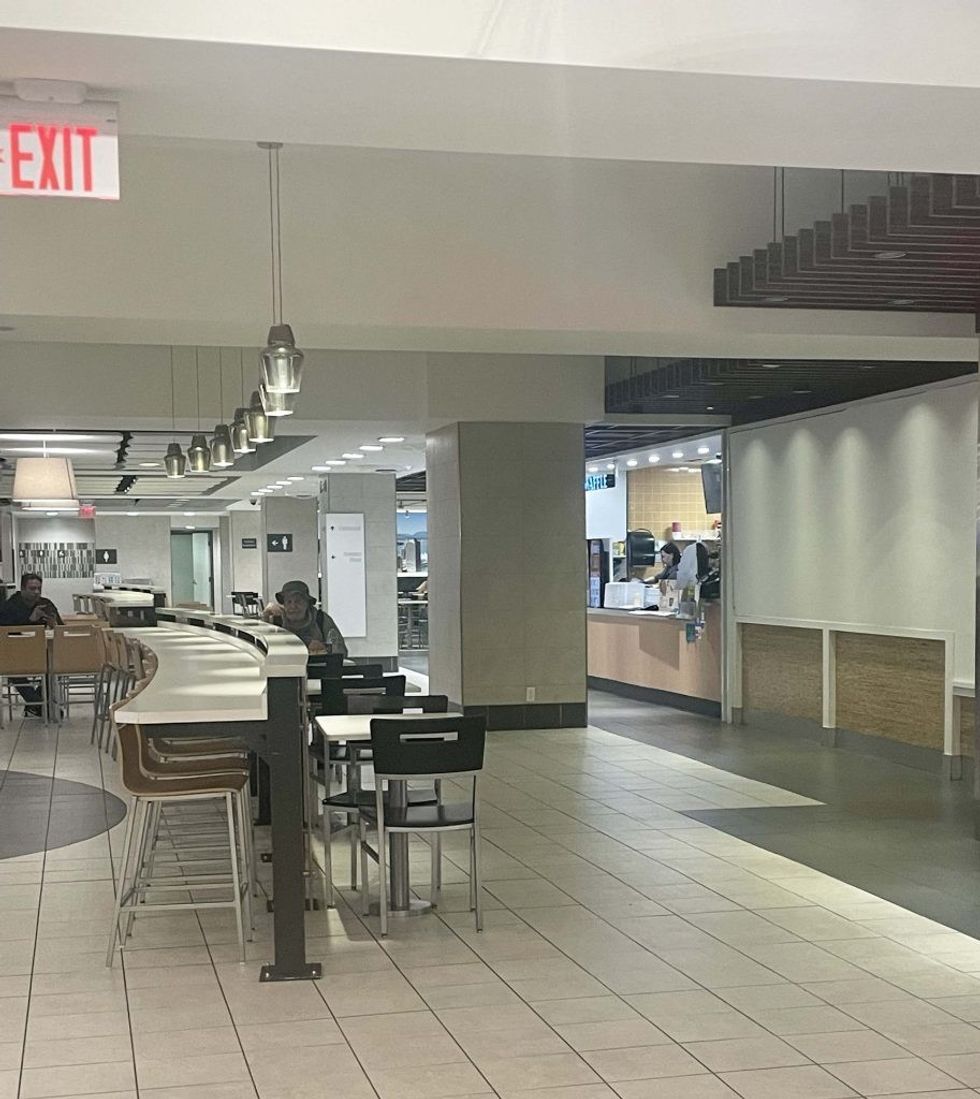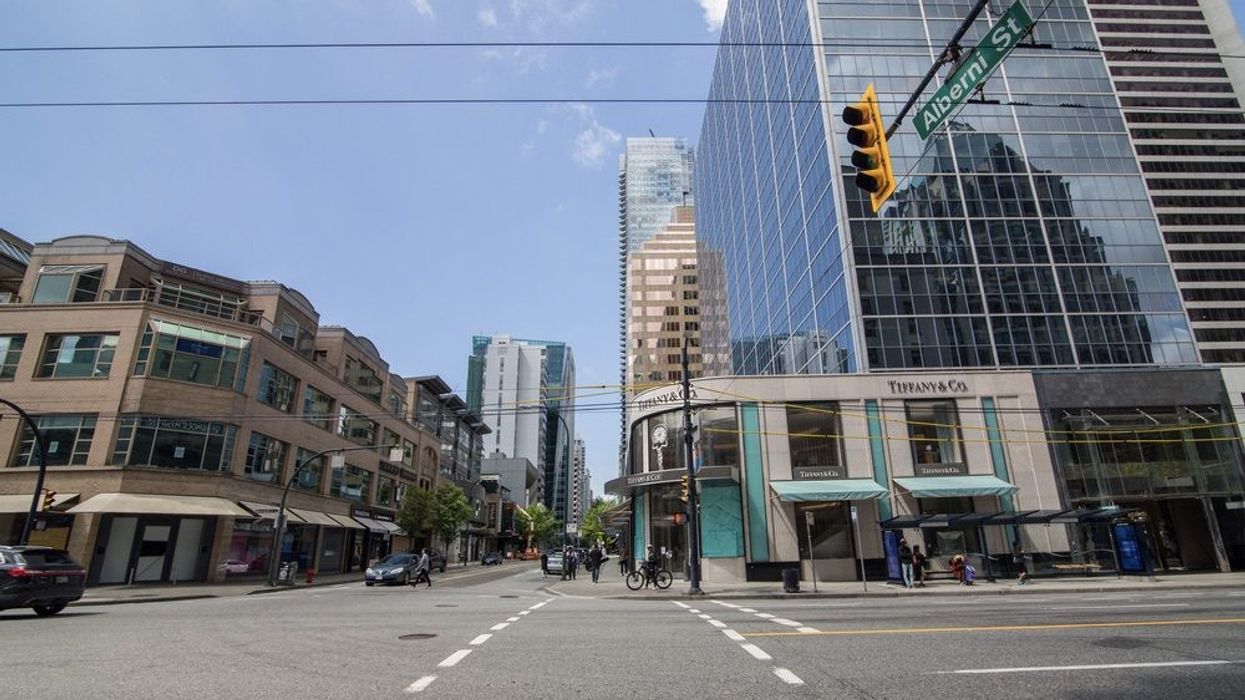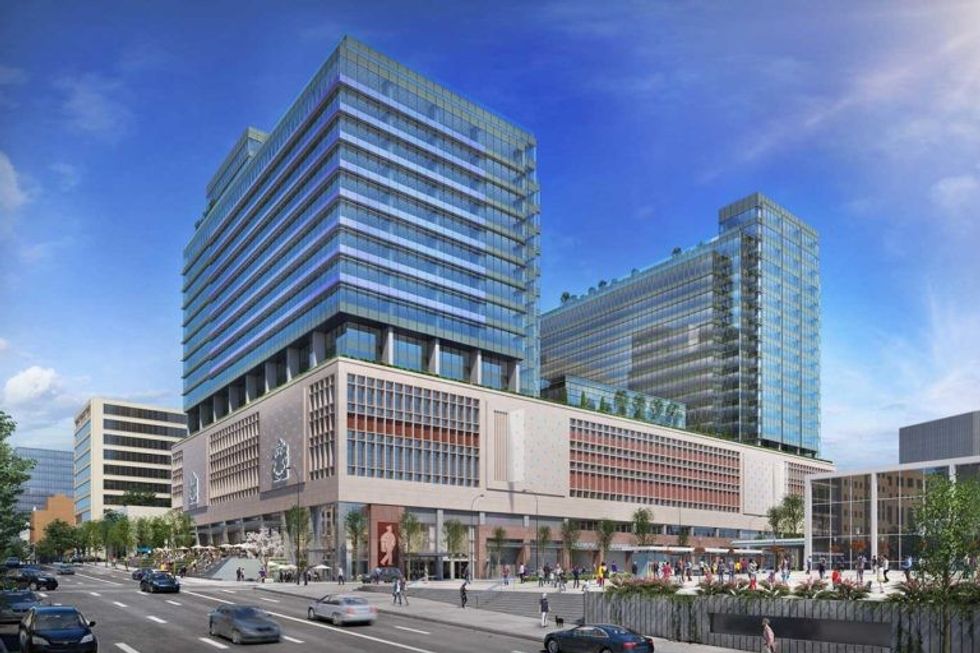On a regular Friday in February just before noon in downtown Vancouver, it feels more like one of those long weekends when half the city has cleared out.
Food courts are almost deserted and not fully leased. There are “for lease” signs on storefronts that used to be occupied. The upscale Leone store, which used to anchor the Sinclair Centre shopping mall, has papered over windows. Inside the mall, there are government workers milling about and the shops are mostly shut down.
“They couldn’t make a go of it,” says a security guard. “It’s mostly a government building now.”
The phenomenon of working from home is, of course, largely to blame for the new quietude. The TWATs aren’t helping. That’s the acronym being used for those workers who only go into the office Tuesdays, Wednesdays and Thursdays. That trend could account for the notable absence of bodies on the streets and in the food courts on a Friday.

Office workers used to go for after-work drinks at the end of the week. Now they move from their dining-table office to the couch and Netflix.
There’d been an expectation that 2023 would bring a renewed vitality to the urban centre, but the opposite happened. A new Colliers report showed the urban retail vacancy went from 2.5% in the middle of last year to 4% this year. The highest retail vacancy rates are in Vancouver’s traditionally most popular high street neighbourhoods, including Robson Street, Gastown and Kitsilano. Meanwhile, large suburban shopping centres are thriving, with an ultra low vacancy rate of 1%.
“In downtown, a lot of people have come back to work -- and a lot of people have not come back to work,” says Sherman Scott, associate vice president, Colliers, and an urban retail specialist.

“It’s interesting to see the urban vacancy rate go up and the suburban rate go down. We have been scratching our heads and brainstorming and coming up with reasons.”
Meanwhile, the office vacancy rate is at a high of 10%, including sublease spaces.
Dan Jordan, Colliers senior vice president, says it does seem like there’s a delay in the numbers of workers returning to the office.
“I’ve been doing this [for] 18 years in Vancouver that’s the highest I’ve seen it,” he says of the vacancy rate. “But we’ve had such a low vacancy environment, we are almost spoiled by our own success in Vancouver.”
Part of the downtown spike in vacancies in Vancouver is due to increased vandalism and crime that came about during the pandemic, and has only continued.
“Gastown was one of the most in demand markets pre-COVID. It was edgy and cool,” says Scott.
For most retailers, it’s a little too edgy these days. Gastown was hard hit by street crime and now has an office vacancy rate of 14%, says Jordan. That’s also due to the area’s former concentration of tech workers. Now that the tech industry is losing steam, that segment of the market isn’t driving the majority of demand, which is another concern.

The once-thriving tech sector has been making troubling announcements lately.
According to news reports, PayPal, Yahoo, Google, Salesforce, Meta/Facebook, Microsoft, eBay, Twitter, and even Zoom, Wayfair, and Amazon -- companies that profited greatly from the new pandemic lifestyle -- have announced staff reductions as inflation takes its toll. E-commerce giant Amazon announced it would be cutting 18,000 jobs alone.
It remains to be seen whether Amazon’s new offices at The Post, on Georgia Street, will re-activate the eastern part of downtown with 1.13 million sq. ft of leased space above a retail podium. Occupancy was to start at the beginning of this year. There should be an estimated 7,000 workers on site, once fully occupied. The first phase of occupancy is imminent. However, construction on the second phase is a little behind and won’t complete until later this year, according to Jordan.
“We still have a lot of new supply coming onto the market -- over three million sq. ft of space delivered downtown over the next, say, 24 months,” he says.
And The Post office building represents one-third of that.
Potential layoffs aside, will those employees work at the new space? Or will The Post become more of a part-time building?
So far, nobody has heard, says Jordan. There is only speculation.
“I don’t think that [building] in itself will move the needle significantly,” says Scott. “Maybe in that immediate area, and maybe as the economy improves… it’s just going to take some time.”
The City of Vancouver announced renewal initiatives for beleaguered Chinatown, which has also seen too many vacant storefronts, and equally struggling downtown Granville Street. Granville is at the heart of downtown, and is nowhere near the shopping destination it should be. The City’s new program includes hotel development, better pedestrian and job spaces, and a generally safer environment.
They’ve promised to hire 100 new police officers and 100 mental health nurses. Retail stores have had to endure increased vandalism and random acts of violence in the last couple of years.
RELATED: The Entire History of Vancouver’s Granville Street, And Its Envisioned Future
That means big suburban malls are absolutely thriving as all those remote workers shop closer to home.
“Where do I start?” asks Scott. “My general feeling is, you know, 4% [for urban retail] is still relatively healthy… maybe still a bit in the landlord’s favour.”
However, he’s seen a lot of urban mom and pop businesses struggle and go out of business, and not just for the obvious reasons. For example, some landlords may no longer be able or willing to continue to defer the rent.
“I do think there are other factors at play here. There were some government programs of course and some landlord assistance through abatements and deferrals, again coming out of COVID. Landlords were asking the question, ‘you are still in deferral her -- are you going to be able catch up?’ I just don’t think some of them are going to be able to catch up, so maybe it’s time to re-tenant that space.
“There have been people to backfill the space, but you do feel bad for the people who couldn’t hang on. I’ve seen a lot of that.”
A subdued downtown has taken the industry by surprise, but so did the rate of inflation last year and the Bank of Canada’s response to it. Some say that if government wants to re-activate the urban core and get the economy going again, they need to take action. Government could start by requiring its own employees return to the office, says Jordan.
“They should be leading the charge.”
Any loss of downtown vibrancy is about more than just higher vacancies, says developer David Fullbrook, chief executive officer, development & acquisitions, for Merchant House Capital.

“I think it should be considered an existential threat to cities, which in turn should be seen as a potential limiting factor to future economic productivity, innovation, and business culture,” says Fullbrook. “It should be seen by government as a crisis that requires a call to action, because limiting the economic vitality of cities will have regional and national implications to future jobs and incomes.”
Jordan said that while it’s still a “balanced market” with increased opportunities for tenants, he does wonder how it’s going to play out in the next year as significant new office space comes online.
He says the thing to watch for is that aforementioned three million sq. ft of office coming available, which, while mostly spoken for, will free up spaces that tenants will be vacating. He expects sublease space to increase.
“It will be interesting to see as that comes on stream, how that affects our vacancy.”



















